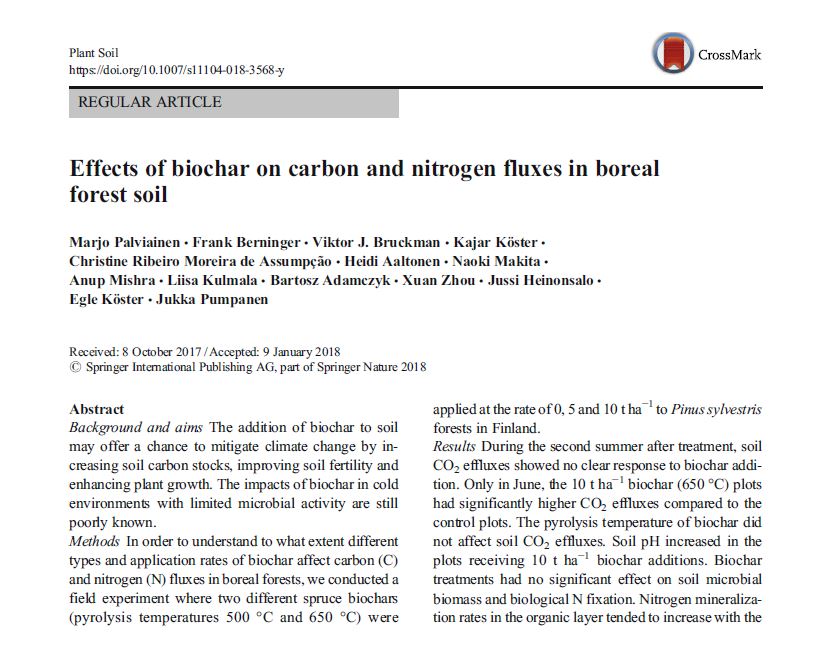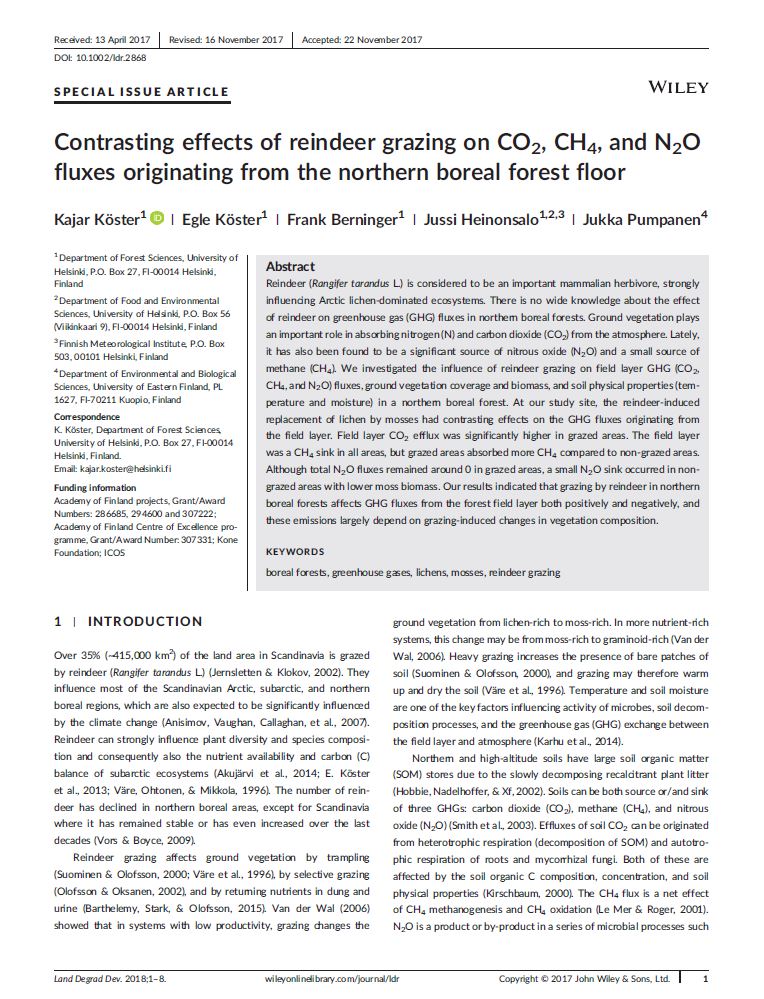From 1.1.2018 we are part of the INAR = Institute for Atmospheric and Earth System Research
Institute for Atmospheric and Earth System Research / Forest Sciences
Faculty of Agriculture and Forestry, University of Helsinki, Finland

From 1.1.2018 we are part of the INAR = Institute for Atmospheric and Earth System Research
Institute for Atmospheric and Earth System Research / Forest Sciences
Faculty of Agriculture and Forestry, University of Helsinki, Finland

New paper by Palviainen et al., 2018 is dealing with effects on biochar on C and N fluxes in boreal forest soils. The addition of biochar to soil may offer a chance to mitigate climate change by increasing soil carbon stocks, improving soil fertility and enhancing plant growth.
The results of the study indicate that wood-derived biochar amendment of 5–10 t ha−1 did not have a clear and consistent effect on soil CO2 effluxes in boreal Scots pine forests. Biochar amendment increased the soil pH but it had no significant effect on soil microbial biomass and biological N fixation at this stage. Nitrogen mineralization rates in the organic layer had a tendency to increase with the amount of added biochar, but no statistically significant effect was detected. The results suggest that biochar can be utilized to climate change mitigation and C sequestration in boreal forests without causing undesirable effects on soil microbial biomass, key N cycling processes or native soil C stocks.

New paper by Köster et al., 2018 assesses the influence of reindeer on the fluxes of three GHGs (CO2, CH4, N2O) in the field layer of a northern boreal forest.
We compared grazed and non‐grazed areas and linked the GHG fluxes to vegetation biomass, plant functional type, and characteristics of soil (root biomass, soil temperature, and moisture).
Our study showed that grazing significantly reduced lichen coverage and biomass. The biomass and coverage of mosses concurrently increased significantly in grazed areas. Our results indicated that grazing induced changes in vegetation composition both positively and negatively affect GHG fluxes from the forest field layer in a northern boreal forest.
Our results showed clearly higher CO2 emissions from grazed areas, and these were affected by soil temperature and lichen coverage.
Our results also clearly demonstrated that CH4 and N2O fluxes were dependent on shifts in aboveground vegetation communities. Soil temperature and moss coverage together with soil moisture explained most of the CH4 fluxes, and grazed areas consumed more CH4. Non-grazed areas with lower moss biomass were concurrently a small N2O sink.
Overall, our results show for the first time that besides influencing the CO2 fluxes from the northern boreal forest floor, reindeer grazing has an impact on the fluxes of other GHGs. Thus, reindeer may have a significant role in determining the GHG balance of northern boreal forests.
